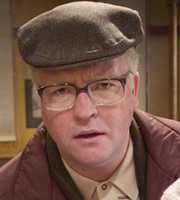- Welcome to Cook'd and Bomb'd.
-
 watching The Sopranos for...
by ishantbekeepingit
watching The Sopranos for...
by ishantbekeepingit
[Today at 05:43:23 AM] -
Taskmaster s17 by Rankersbo
[Today at 05:37:47 AM] -
 The All New Comics Thread...
by 13 schoolyards
The All New Comics Thread...
by 13 schoolyards
[Today at 05:28:23 AM] -
 The origin of Metal
by Pink Gregory
The origin of Metal
by Pink Gregory
[Today at 05:18:33 AM] -
 Fallout 4 free update coming...
by Mobius
Fallout 4 free update coming...
by Mobius
[Today at 05:16:56 AM] -
 American words/phrases you...
by famethrowa
American words/phrases you...
by famethrowa
[Today at 04:49:14 AM] -
 Doctor Who - Series 14, part...
by jamiefairlie
Doctor Who - Series 14, part...
by jamiefairlie
[Today at 04:39:48 AM] -
 Terry & June gets a content...
by jamiefairlie
Terry & June gets a content...
by jamiefairlie
[Today at 04:13:59 AM] -
 Lived experience
by GMTV
Lived experience
by GMTV
[Today at 04:05:56 AM] -
The Captain Tom grift continues... by McDead
[Today at 01:32:55 AM]
Members
 Total Members: 17,826
Total Members: 17,826 Latest: skinnylike
Latest: skinnylike
Stats
 Total Posts: 5,584,358
Total Posts: 5,584,358 Total Topics: 106,754
Total Topics: 106,754 Online Today: 1,132
Online Today: 1,132 Online Ever: 3,311
Online Ever: 3,311- (July 08, 2021, 03:14:41 AM)
Users Online
Playing music without reading it (peeahpeeahpeeahno mainly)
Started by BeardFaceMan, January 16, 2019, 11:13:29 AM
Previous topic - Next topic
User actions


